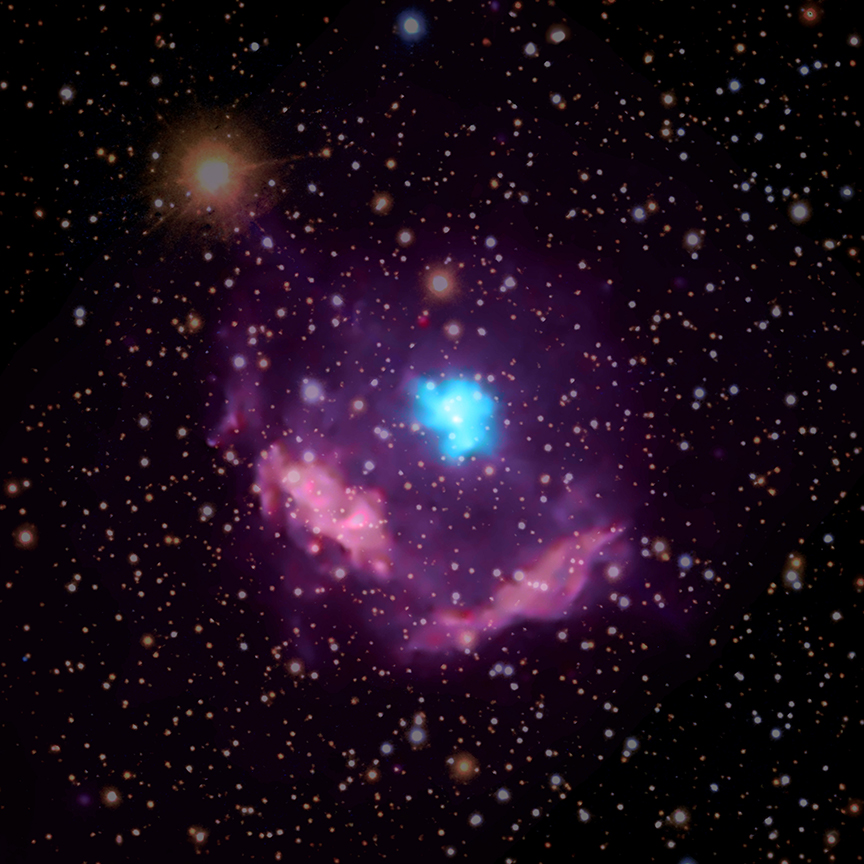The cosmos is a veritable symphony of celestial phenomena, orchestrated by the underlying laws of physics. Among the cacophony, pulsars emerge as the pulsating metronomes of the universe. The youngest pulsar ever observed has been aptly characterized as “the baby star that already knows how to talk,” drawing attention to its remarkable attributes and the sophisticated manners in which it communicates with its surroundings. This article delves into the intricate tapestry of this stellar phenomenon, unraveling the implications of its newfound status within the astronomical community.
First, it is essential to understand what constitutes a pulsar. Essentially, pulsars are highly magnetized neutron stars, remnants born from the cataclysmic deaths of massive stars. These stellar carcasses collapse under their own gravity, culminating in an extraordinarily dense object, which possesses a composition primarily composed of neutrons. The rotation of a pulsar, combined with its strong magnetic field, produces a beam of electromagnetic radiation that can be detected from Earth, akin to a lighthouse illuminating the surrounding darkness.
The recent discovery of the youngest pulsar introduces previously uncharted elements within the pulsar classification. This particular pulsar, designated PSR J0901-4046, is the remnant of a supernova explosion that occurred merely several hundred years ago, marking its relatively nascent appearance in an otherwise ancient universe. The short time frame delineates its distinctive characteristic: it engages in rapid rotational periods which can reach up to 800 times per second. Thus, it differentiates itself from older pulsars that exhibit a gradual slowdown in their spin due to energy lost through radiation and particle emissions.
The pulsar’s remarkable rapidity encapsulates an energetic phenomenon that has drawn comparisons to a cosmic metronome. Each pulse emitted signals an intricate rhythm that transcends mere tonality; rather, it serves as a serenade representing the pulsar’s formidable energy output and intricate internal structure. However, this “talking” is not simply auditory; it extends into the realms of multifrequency emissions, where the pulsar communicates information across the electromagnetic spectrum, from radio waves to gamma rays. This versatility enhances its allure, allowing it to convey narratives of its formation, lifespan, and connection to the interstellar medium.
Moreover, the study of PSR J0901-4046 poses significant implications for our understanding of stellar evolution and the lifecycle of neutron stars. The uniqueness of this pulsar may challenge long-held assumptions regarding the evolution of pulsars, particularly concerning their progenitor systems. Traditional models suggest that pulsars evolve from a binary system, where a companion star exerts influence during the supernova phase. However, this young pulsar’s formation suggests alternative pathways, opening avenues for further investigation. Its solitary existence may provide insights into the dynamics associated with supernova remnants and their subsequent spectral emissions.
The broader implications of such findings extend beyond mere curiosity; they allow astrophysicists to distinguish between various evolutionary paths that stars undertake. The pulsar serves as a natural laboratory, providing a unique opportunity to understand the conditions of matter and energy in an environment that is vastly different from terrestrial norms. This understanding enlightens our comprehension of fundamental physics, particularly in areas such as quantum mechanics, gravitation, and high-energy particle interactions.
Moreover, this newfound pulsar elucidates the synthesis of heavy elements in the universe—a process that is vastly significant in astrochemical studies. During explosive events like supernovae, nucleosynthesis occurs, resulting in the creation of elements heavier than iron. Investigations into the emissions of PSR J0901-4046 allow scientists to refine models of nucleosynthesis, revealing the intricacies involved in heavy element formation and their subsequent distribution throughout the cosmos. Consequently, the pulsar emerges as an emissary of stellar alchemy, communicating the age-old dance of creation and destruction that shapes the universe.
Furthermore, the pulsar community’s engagement with such a vibrant celestial body extends to practical applications. The phenomena associated with pulsars have garnered attention in the realm of precision timekeeping and navigation systems. The regularity of pulsar pulses provides a potential framework for developing advanced timing systems, which could revolutionize global positioning and synchronization technologies. As the youngest pulsar continues to evolve, it solidifies its status not only as an object of scientific study but also as a potential cornerstone in enhancing technological capabilities.
In summary, the discovery of the youngest pulsar, PSR J0901-4046, serves as a clarion call in the field of astrophysics. Its rapid rotational velocity, multifrequency emissions, and implications on stellar evolution and nucleosynthesis underscore its unique appeal. Furthermore, it embodies the essence of cosmic communication, as it narrates the story of life’s continuous cycle among the stars. It invites scientists and stargazers alike to ponder the mysteries of the universe, bridging the gaps between extant knowledge and future revelations. The pulsar’s capacity to engage in conversation with our understanding of astrophysics enriches the astronomical community’s arsenal, turning our gaze toward the infinite possibilities that lie ahead.












